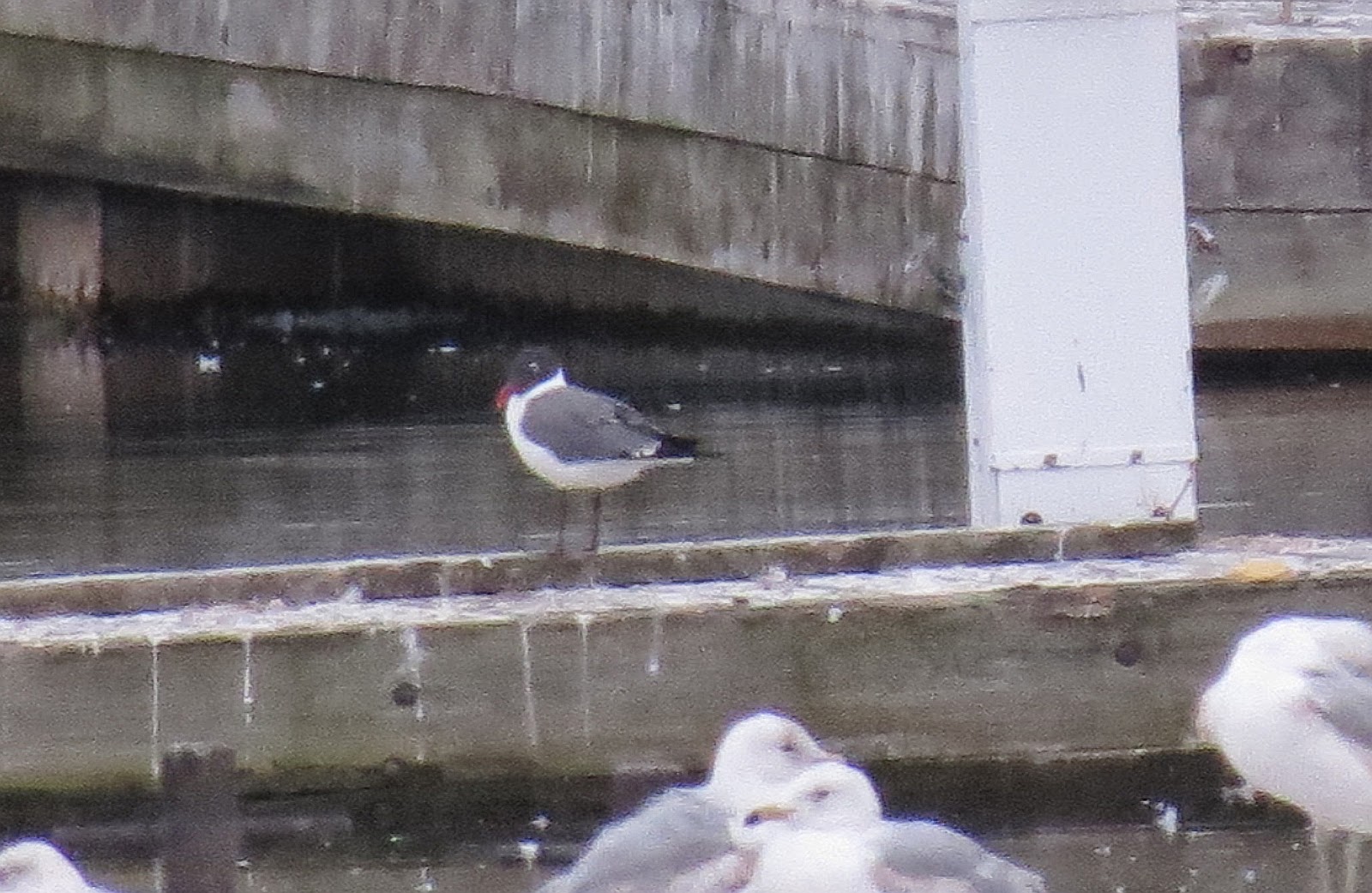I'm back! After a great couple of weeks birding and leading hikes in the Rondeau area, I now have decent internet access again, so expect regular posts to resume. For now, I want to share the story of two very rare birds I stumbled upon last week.
This winter was extremely harsh, and the ice build-up in Rondeau Bay partially destroyed the pier in the park. As it is now inaccessible for people, gulls and terns have been gathering on what is left, and I checked it several times a day while staying at Rondeau.
On May 15th I was walking towards the Marsh Trail parking lot to meet a friend, which took me on a route allowing distant views of the pier. A quick view revealed two cormorants sitting there - piquing my interest as I hadn't seen any on the pier previously. One of the two appeared to be smaller, and while I didn't really think it was anything special, I decided to get closer.
About halfway to the pier I scanned it again, and that cormorant was still looking strikingly small next to the other. This was the point where I started running!
I got to the base of the pier, raised my binoculars and there it was - a Neotropic Cormorant!
Note the short bill, small size and long tail of the Neotropic. There appeared to be some white around the base of the bill, but looks were poor.
After no more than about 30 seconds, the cormorants took off heading south. I called Pilar who was at Marsh Trail and she was also able to see the two distinctly unmatched cormorants going by.
Neotropic Cormorant is the rarest bird I've ever found - although records have been slightly more frequent in recent years, there are still only a handful for Ontario, with this being the first for the Rondeau area. What is presumably the same bird was
seen again and
photographed at Erieau a couple of days later.
The very next day I had a good day of birding, with the highlight being a gorgeously pink adult Franklin's Gull at Erieau. I was leading a hike on Marsh Trail in the evening with four relatively beginner birders, where we drove well out on the trail to spend much of the evening in the marsh itself.
Shortly after parking and beginning to walk, I noticed several sparrows feeding on the trail ahead of us. Most were obviously White-crowned Sparrows, but one bird was bigger, chunkier and completely unfamiliar, even from views of its back as it hopped around the corner.
We moved up, and I quickly got views of the bird feeding on the trail in the scope. Still, I didn't know what it was! Most reminiscent of Fox Sparrow, my mind leapt to some kind of Old World Bunting. It was only when it flew revealing whitish patches in the wings and a very distinctive white pattern in the tail that I realised what it was - a female Lark Bunting!
It fed for about 5 minutes as I showed it to my hike participants, before it abruptly flew into the bushes on the side of the trail, never to be seen again that evening or the next day. I unfortunately never managed to get a photograph.
Lark Bunting has been recorded about 30 times in Ontario, but is probably now about equal in rarity to Neotropic Cormorant given that species' recent increase in eastern North America.
So there you have it - the two rarest birds I've ever found, and only a little over 24 hours apart! More to come soon.













